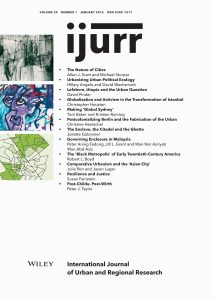While voices in the comparative urbanism literature call for researchers to approach comparison with more experimental and critical methodologies, there remains no consensus on how to design and realize these studies. This essay examines the implications of comparative urbanism for researching the ‘Asian City’. Given the critique of existing modes of comparison embedded in recent calls for a new comparative urbanism, researchers are faced with a number of pressing questions: How do we approach this ‘regional’ topic in a way that both resists categorizing the ‘Asian City’ as an exotic ‘other’, elevating it onto a mythical pedestal, yet appreciates its differences, localisms and unique ‘cosmopolitan vernacular’ (Clifford, 1997; Werbner and Modood, 1997)? This essay thus highlights the multiple challenges of applying the comparative lens to the ‘Asian City’, arguing that broader conceptualizations of the ‘Asian City’ help to address the dangers in isolating Asian research into its own canon of parochial urban theory and offering a greater diversity of possibilities for justifying case selection in comparative approaches. In doing so, we hope that this essay responds to the comparative turn by illuminating to some extent its inherent complexity and methodological challenges.
Details
Written by:
Julie Ren, Jason Luger
Digital Object Identifier (DOI)
10.1111/1468-2427.12140
About DOI
Read full article as PDF
Read full article as HTML
See the references for this article

